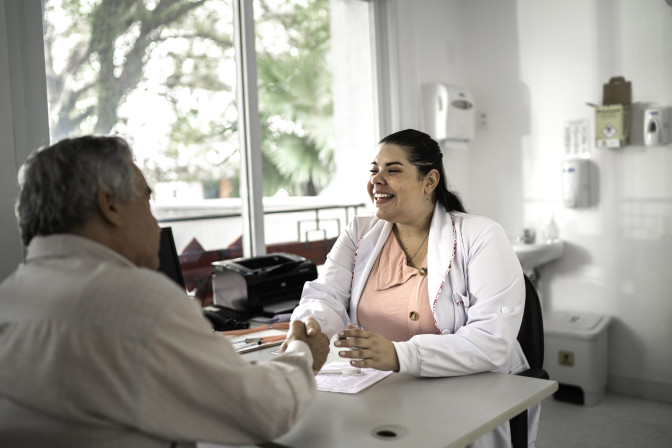Buy one pair of eyeglasses, get a second pair 50% off!
*Restrictions apply. Click here for details.
A Guide to Dry Eye Treatment Options
Dry eyes can be more than just a short-term nuisance, as they can lead to potentially harmful eye infections. Dry eye can get in the way of your daily productivity and even affect your quality of life. Thankfully, dry eye treatments have evolved over the past decade, enabling many suffering from dry eye to have some relief. These treatments can vary from simple home remedies to multistep plans. Each plan is aimed at helping your eyes produce quality tears. If you have recently been experiencing dry eyes, schedule an appointment with your local eyecarecenter. Our skilled team of eye care professionals can pinpoint the cause, assess the conditions severity, and create a treatment plan customized to you.
Dry Eye Treatment Options
Using Artificial Tears
Artificial tears are commonly found as an over-the-counter solution and provide moisture to the eyes. They contain ingredients similar to what's in your natural tears. Your eye doctor may recommend using preservative-free artificial tears, as formulas containing preservatives can cause further eye irritation. Artificial tears can be used as needed to make your eyes more comfortable. However, if you find yourself using them more than four times a day, be sure to set up an appointment with one of our optometrists to find a more effective treatment.
Washing Your Eyelids
Dry eye can be caused by a blockage of the oil glands around the eyelids, which can lead to inflammation referred to as blepharitis. Your eye doctor may recommend using eyelid cleansers and a warm compress to assist with combating the inflammation.
Overnight Relief with Eye Ointments
Eye ointments are also sold as an over the counter method for treating dry eye. They are typically thicker than artificial tears and are often used as an overnight treatment option. They are particularly helpful for those who regularly wake up with scratchy eyes.
Prescription Medication
Your eye doctor may prescribe eye drops to assist with reducing the effect of dry eye symptoms. These eye drops can also assist with increasing your eye’s production of quality tears. These medications are usually reserved for those suffering from moderate to severe case of dry eye. There are other medications besides prescription eye drops that can help with dry eye, such as corticosteroids and antibiotics. Some of these medications are used as eye drops, while others can be taken orally.
Punctal Plugs
Punctal plugs are a treatment option that give your eye a better hold onto its own tears. Once implanted by your eye doctor, the punctal plugs help conserve your natural tears for a longer time.
Long-Term Relief with Autologous Serum Drops
A long-term solution for severe dry eye is autologous serum drops, which are eye drops made from your own blood. After a blood sample is taken, the blood cells are then removed. These blood cells are then combined with a salt solution, creating a serum similar to your natural tears. Autologous serum drops can then be applied as eye drops.
How to Prevent Dry Eye
If you are experiencing any dry eye symptoms, you can prevent the worsening of the condition with these tips to avoid dry eyes:
Purchase a humidifier for your home
Blink regularly while using electronics
Limit screen time or take breaks to refresh your eyes
Keep your body hydrated by drinking water throughout the day
Keep your eyes from being directly exposed to air vents and fans
Avoid being in smoky environments
Wear sunglasses while outside in the sun
Common Symptoms of Dry Eye

The symptoms of dry eye can range from a scratchy or burning feeling in your eye to even experiencing changes in vision. Those with dry eye disease can even have reduced or blurry vision. They may also experience sensitivity to light.
What Increases Your Risk of Dry Eye?
When your eye is unable to produce enough tears to keep the surface of the eye moisturized, you experience discomfort that can potentially lead to vision problems. People over the age of 50, especially women due to menopause, are most at risk for developing dry eye disease. Those who wear contact lenses are also at a higher risk of developing this condition. Dry eye can be caused by a variety of factors, such as screen exposure or even spending too much time in dry environments. Additionally, dry eye can also be caused by:
Laser eye surgeries
Side effects of a medication
Another health condition, such as diabetes or thyroids
Always inform your eye doctor of any changes in your eye health, as they will be able to determine the cause of problem and find a solution made for you.
Is Dry Eye A Serious Condition?
Those suffering from dry eye have a higher risk of developing an eye condition or an injury that can negatively impact your vision. Tears are produced by your eye to keep it moisturized and free from debris. If the tears produced by your eye are ineffective at this, your risk of corneal abrasion, or scratch, is increased. This allows the surface of the eye to be exposed to harmful eye infections that can impact your eye’s health.
Start Getting Dry Eye Relief Today!

Dry eye can cause discomfort and even lead to more serious eye health issues. To start getting relief from dry eye symptoms, schedule an eye exam with your local eyecarecenter. Together, we’ll find a solution that alleviates the pain of dry eye.
Find a location near you to start scheduling your appointment today.
